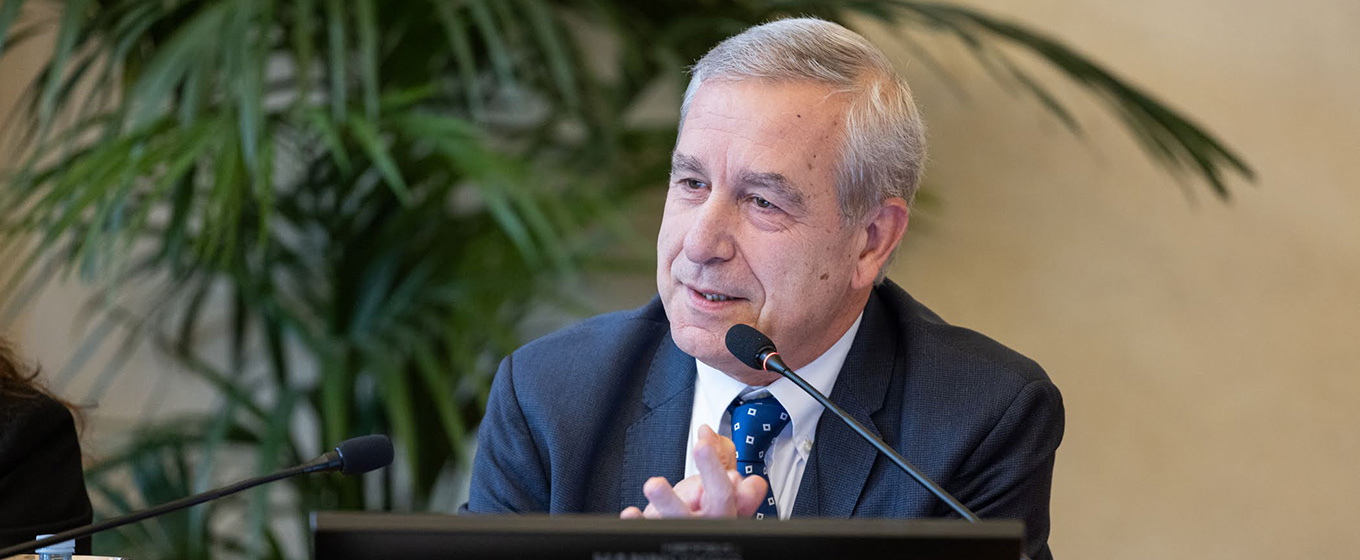Community, Culture, and Inclusiveness

by Beniamina Cassetta
We had the opportunity to interview Professor Luigi d’Alonzo, who is the Rector’s Delegate for Inclusion and a Full Professor of Special Education.
We asked him what it truly means to be a cultured individual in a university community. Professor d’Alonzo states that being culturally aware goes beyond academic excellence and teaching. It involves the quality of initiatives that universities undertake towards inclusiveness. For him, being a cultured person means making inclusive thinking a habit and a defining characteristic of a community. It means sharing values that support personal and professional growth and cultivating a perspective that is attentive to everyone's needs. The service that aids students with disabilities was inaugurated in 1999, and since then, the number of students using it has significantly increased. Initially, the service was limited to the Milan campus and only served 58 students. However, it now serves about 3,100 students across various campuses.
How has the academic teaching of special education changed, and what characterises it at the moment?
Special education used to be thought of to help people who have disabilities or learning difficulties. However, today it includes anyone with specific educational needs, even if they do not hold a medical certification. That is why we changed the name of our department from "Services for the Integration of Students with Disabilities and Specific Learning Disorders" to "Services for Inclusion." This change was made to make it clear that anyone who needs our help can access our services. Our primary objective is to remove any barriers students may encounter during their studies, whether they are architectural, psychological, or physical. For example, we used to have difficulty identifying students who have eating disorders or personal issues that were not linked to learning disorders. However, we realised that they too require support throughout their educational journey due to their specific conditions. Our service is a point of reference for them.
In the past, it was believed that the best way to help students who have autism, learning disabilities, or other specific conditions was to address their individual needs. However, now we understand that if we want to create a truly inclusive environment that fosters a student's development, we must work extensively on their context. This includes the environment in which they live, their peers, and the entire teaching body, not just the support teacher alone. Italy is a beacon for Europe and beyond when it comes to research and practice in this educational field.
How has technology positively impacted the classrooms to facilitate the inclusion of individuals with disabilities?
Technology plays a crucial role in facilitating the inclusion of individuals with disabilities. It includes assistive technologies like prosthetics for legs and hands, as well as computers and software that can help people with sensory disabilities to manage independently in this world. We are planning to pilot a technology for visually impaired students on our campuses, which will allow them to navigate the campus using a mobile phone or a white cane. This technology will help them understand where various facilities are located, such as the cafeteria, the library, or the student centre, and we hope it will improve their university experience overall.
During the pandemic, we learned that subtitles could be a game-changer for people who have hearing loss or auditory impairments. When all classes were online, many students who have sensory disabilities could not follow the lessons. We implemented this simple feature using tools like Teams, Skype, or Blackboard, but the most challenging part was communicating and conveying the importance of remembering to insert or activate the subtitles to all professors and administrative staff. This experience highlighted the necessity of creating a world suitable for everyone and considering all individuals with difficulties when designing and adopting technology.
This topic should become ingrained in us, a constant thought in the realm of education. We must continue to strive until these precautions become completely natural and automatic. Our inclusive culture should continue to expand until it becomes a universal project of welcome.
What initiatives have been created to make the entire community of the Università Cattolica more aware and inclusive?
Every year, usually in Spring, we organise an event called "Put Yourself in My Shoes." During this event, students who have disabilities or specific needs invite their classmates and friends to visit the University campuses with them. They lead them through various paths to provide a direct experience of what it feels like to be in their shoes. For instance, blind and visually impaired students guide their classmates who are appropriately blindfolded, up the stairs or to use the restroom without sight.
As part of this initiative, we have created a path for everyone to experience physical disability through direct experience. We invite students and staff to sit in a wheelchair and follow a student who regularly uses a wheelchair. This allows them to move around the campus and confront various barriers, whether architectural or beyond. These experiences create a sense of community and become a true celebration of inclusion.
We also invite faculty and administrative staff to participate in this initiative. We believe that this is the best way to ensure that inclusivity becomes part of our cultural and educational institution. It is our commitment to personally engage in making this world truly accessible and inclusive for everyone. We can truly call ourselves cultured individuals only if our University can lead the way through the development of a truly inclusive way of thinking.

